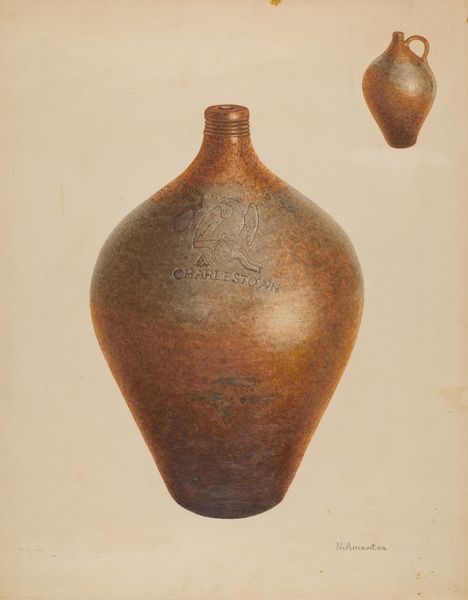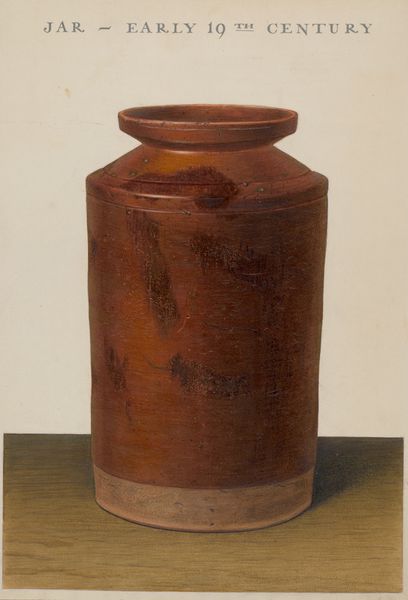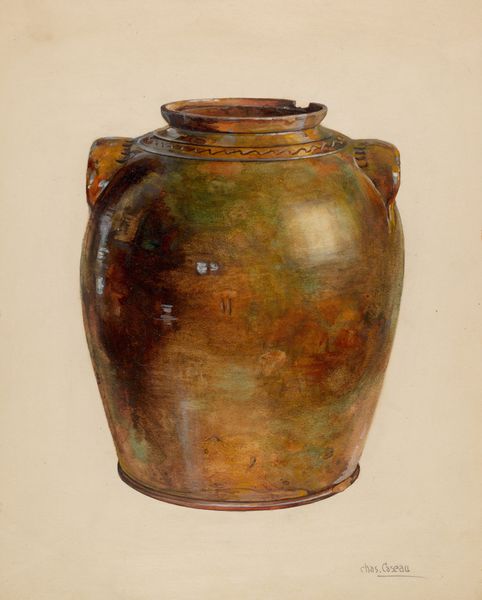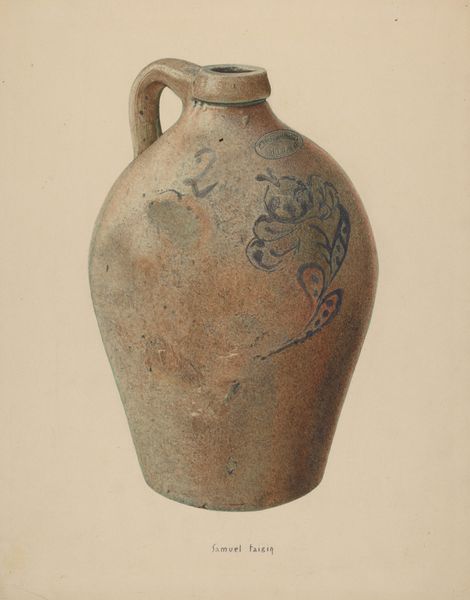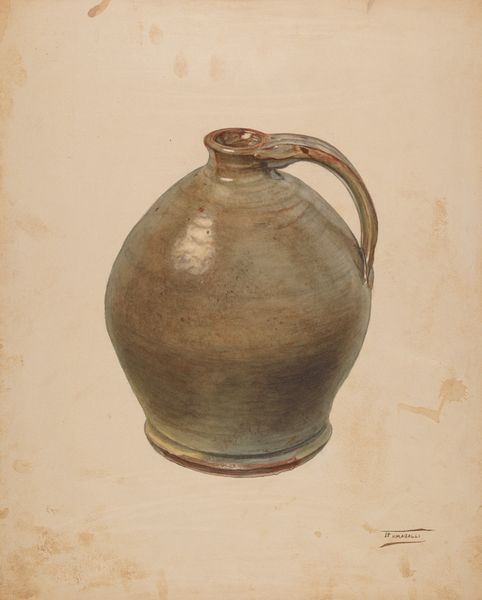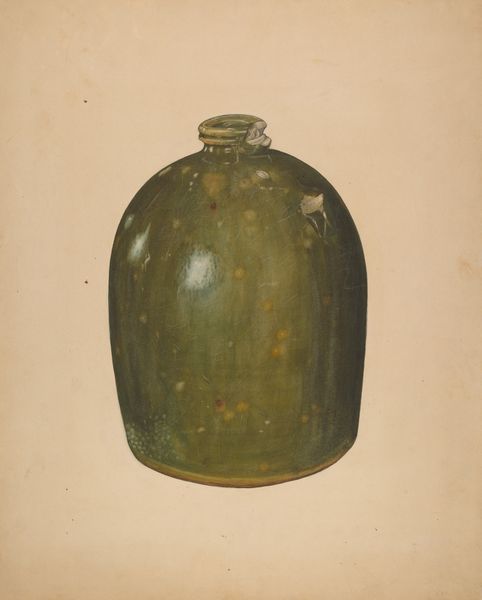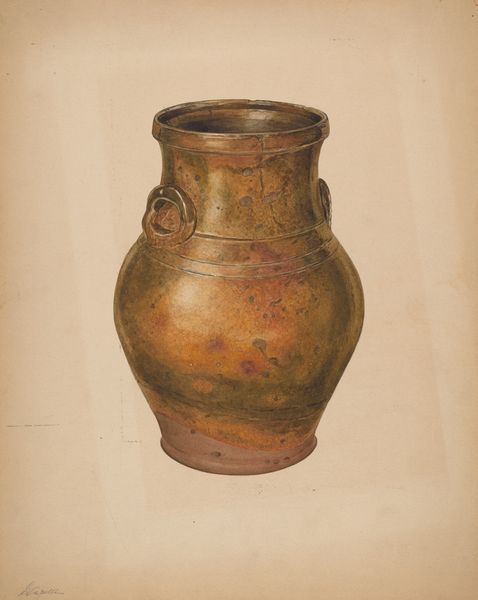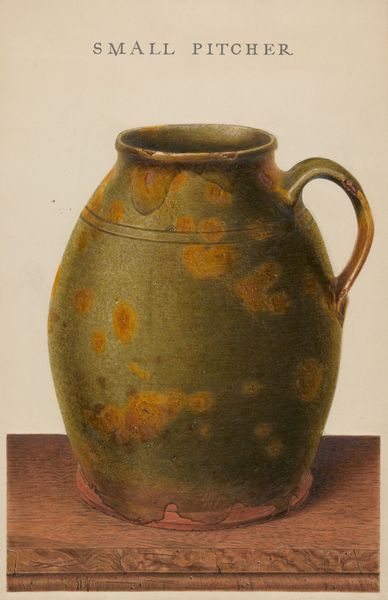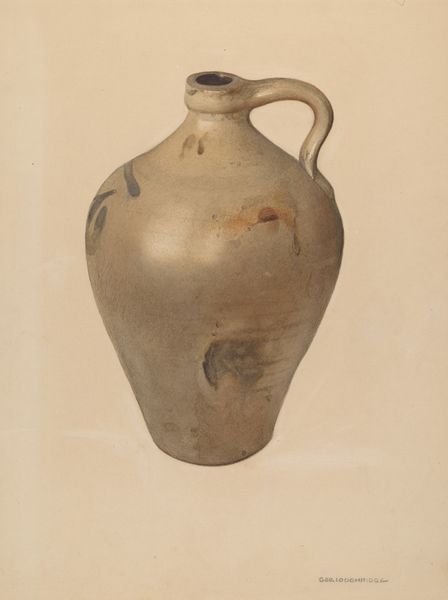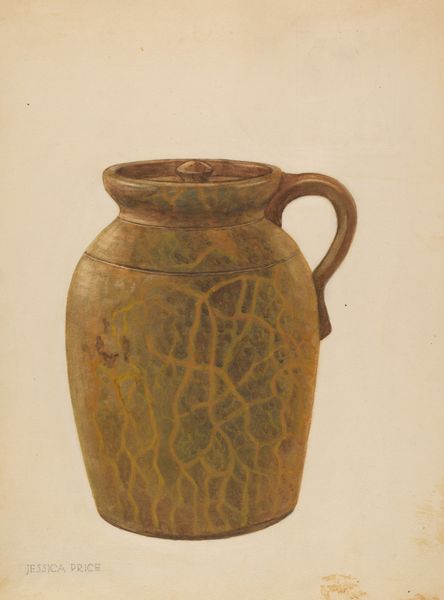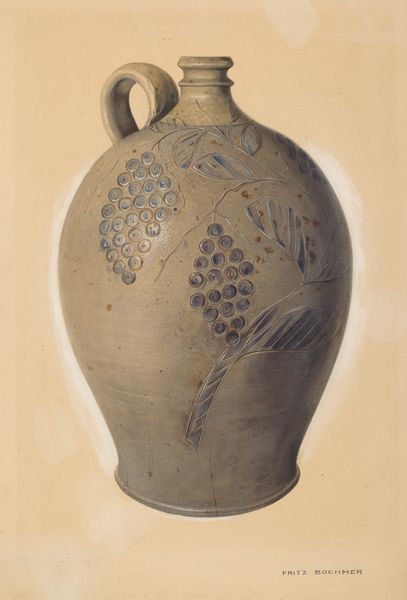
drawing, watercolor
#
drawing
#
water colours
#
watercolor
#
academic-art
#
miniature
#
watercolor
#
realism
Dimensions: overall: 22.6 x 16 cm (8 7/8 x 6 5/16 in.)
Copyright: National Gallery of Art: CC0 1.0
Curator: Welcome. Before us is Alfred Parys’ “Bottle,” a watercolor drawing from around 1939. It's deceptively simple, yet meticulously rendered in the academic style. Editor: My first thought: a very melancholic stillness. The somber greens and browns seem to capture a feeling of quiet contemplation. There's a loneliness to this simple object depicted, especially against such a plain backdrop. Curator: I find the composition masterful. Notice how Parys uses light and shadow to create a sense of volume and form. The muted palette serves to highlight the texture of the bottle, giving it a tangible, almost tactile quality. The form itself is a study of balance and proportion. Editor: But the "bottle" itself – such an unassuming object. What was its intended purpose? Was it for everyday use, accessible to anyone, or reserved for wealthier tables? Does it embody the austerity of the interwar years or speak to wider environmental issues regarding consumption? I can imagine that bottle slowly breaking down, polluting, just as its contents will at some point go stale, perhaps dangerous. Curator: One could interpret the "realism" in that object by reading the meticulous detail not just as "mere copying" but rather that its presence is raised through this medium to the status of a more essential object. Its reality and usefulness in lived life is confirmed by these careful compositional strategies. Editor: I also wonder about Parys himself. Considering the historical context of 1939, as Europe was on the brink of war, could this drawing also be seen as a form of quiet resistance or meditation, removed from conflict, however briefly? Could the very domesticity represented by the object offer a gentle counter-narrative to encroaching military expansion? Curator: Perhaps you are right. As an art historian you give pause for the drawing to ask, what could otherwise pass? As a drawing on a simple object, "Bottle" speaks not to revolution or action but to the intimate observation of form. Editor: Ultimately, both these insights reveal the multi-faceted ways we can engage with artworks – enriching both its narrative possibilities and understanding of artistic value and meaning. Curator: Precisely. It highlights how looking closely can give new perspective and a quiet joy.
Comments
No comments
Be the first to comment and join the conversation on the ultimate creative platform.
